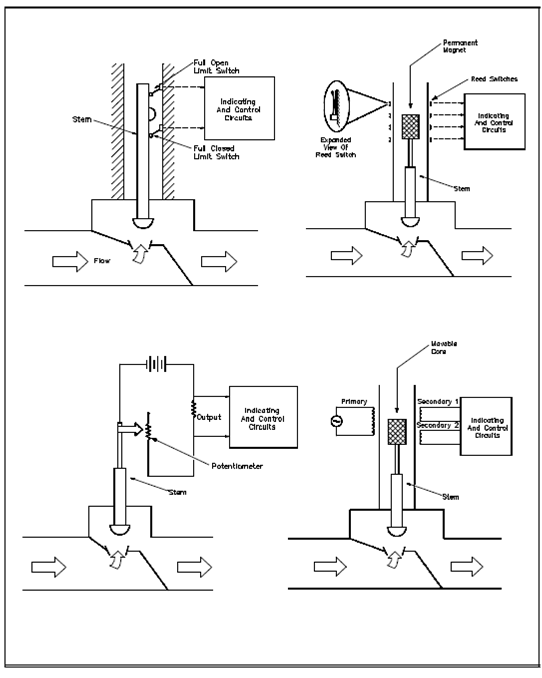Position Indicators:
Potentiometer and LVDT position indicators gives accurate indication of valve and rod position by their travel. In a few applications, LVDTs could be used to denote open and closed positions while small secondary windings are used at either end of the valve stem stroke.
The indicating and control circuitry gives for remote indication of valve or rod position and/or several control functions. A Position indication varies from easy indications like as a light to meter indications denoting exact position.
Control functions are commonly within the form of interlocks. The Pump isolation valves are much time interlocked along with the pump. In a few applications, these interlocks act to avoid the pump from being started along with the valves shut. The pump/valve interlocks could also be used to automatically turn off the pump if one of its isolation valves goes shut or to open a discharge valve at a few time interval after the pump begins.
Valves are sometimes interlocked within every other. In a few systems, two valves might be interlocked to avoid both of the valves from being opened at the similar time. This characteristic is used to avoid undesirable system flowpaths.
Control rod interlocks are generally used to avoid outward motion of certain rods unless certain conditions are met. One like interlock does not permitted outward motion of control rods until the rods used to scram the reactor have been withdrawn to a predetermined height. This and all other rod interlocks ensure in which the safety of the reactor remains intact.

Figure: Position Indicators